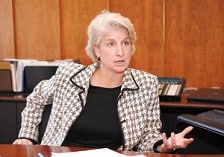Rebuilding confidence

.floatimg-left-hort { float:left; } .floatimg-left-caption-hort { float:left; margin-bottom:10px; width:300px; margin-right:10px; clear:left;} .floatimg-left-vert { float:left; margin-top:10px; margin-right:15px; width:200px;} .floatimg-left-caption-vert { float:left; margin-right:10px; margin-bottom:10px; font-size: 12px; width:200px;} .floatimg-right-hort { float:right; margin-top:10px; margin-left:10px; margin-bottom:10px; width: 300px;} .floatimg-right-caption-hort { float:left; margin-right:10px; margin-bottom:10px; width: 300px; font-size: 12px; } .floatimg-right-vert { float:right; margin-top:10px; margin-left:10px; margin-bottom:10px; width: 200px;} .floatimg-right-caption-vert { float:left; margin-right:10px; margin-bottom:10px; width: 200px; font-size: 12px; } .floatimgright-sidebar { float:right; margin-top:10px; margin-left:10px; margin-bottom:10px; width: 200px; border-top-style: double; border-top-color: black; border-bottom-style: double; border-bottom-color: black;} .floatimgright-sidebar p { line-height: 115%; text-indent: 10px; } .floatimgright-sidebar h4 { font-variant:small-caps; } .pullquote { float:right; margin-top:10px; margin-left:10px; margin-bottom:10px; width: 150px; background: url(http://www.dmbusinessdaily.com/DAILY/editorial/extras/closequote.gif) no-repeat bottom right !important ; line-height: 150%; font-size: 125%; border-top: 1px solid; border-bottom: 1px solid;} .floatvidleft { float:left; margin-bottom:10px; width:325px; margin-right:10px; clear:left;} .floatvidright { float:right; margin-bottom:10px; width:325px; margin-right:10px; clear:left;}
All right, everyone, let’s take a deep, cleansing breath.
After 18 months or so of mayhem in the financial markets, investors whose portfolios have been battered are bound to feel more protective of their money, say investment advisers. But rather than figuratively curling up into the fetal position, now is an ideal time to reassess and move forward.
“Everybody’s been impacted by (the markets) one way or the other, whether personally or professionally,” said Nora Everett, president of Principal Funds, the mutual fund arm of Principal Financial Group Inc.
“What we’ve seen, both with investor behavior and with financial advisers as well, (is that) it’s been an opportunity for everybody to stand back and reassess what their risk tolerance really is,” she said. “It’s a silver lining of sorts, but it’s a painful way to go through the process with the kind of financial market dislocation we’ve seen.”
According to Principal’s 2009 Total View report, which summarizes investment activity for the retirement accounts that Principal administers, investors largely stayed the course last year. Seventy-three percent maintained their asset allocations despite declining balances, and fewer than 5 percent took out loans from their 401(k) accounts, made hardship withdrawals or decreased their contributions. During the same period, 19 percent actually increased their account contributions.
Those statistics are a testament to the effectiveness of Principal’s communication with investors, Everett said, even before it became widely accepted that the economy was in a recession.
“From the equity market perspective, we were involved in a lot of communication with our financial advisers whom we work through, and our investors, about the need to keep a long-term view and perspective and about the recognition that there will be cycles,” she said. “And about the fact that an unrealized loss will be just that until you realize it. There was a lot of communication around making sure that you didn’t panic and in essence sell low.
“In fixed-income investments, what our financial advisers and investors benefited from is that we have a significant product suite within the fixed-income space,” she said.
“And what we saw with regard to new sales was a shift over the past 12 to 18 months of looking at those fixed-income options. So when you look at sales, a lot of our fixed-income products did very well – both shorter-term, lower-beta (risk) products, but also with regard to our high-yield product, our preferred securities product, which is in the fixed-income category.”
Everett, who was promoted to her present position in March 2008, began her career as an investment lawyer nearly 20 years ago, specializing in mergers and acquisitions and other corporate finance deals for Principal.
She oversees a mutual fund complex that holds approximately $50 billion in assets. As a mutual fund company, Principal Funds came through the recession very well, Everett said. It actually gained market share to move from the 23rd-largest adviser-sold mutual fund family in the country to the 16th largest currently.
“So from a competitive perspective, we’ve been successful over the past 12 to 18 months, but obviously it’s been painful for everybody because of the investment losses on an absolute basis,” she said.
Asset allocation – diversification through many different asset classes – is the single most important decision that investors can make, Everett said.
“We’ve always at Principal been a huge believer in asset allocation,” she said. “There are studies that show that over 90 percent of your long-term investment results are a result of that asset allocation decision, less about a specific stock or a specific bond. That’s always been a part of our business model; we grew up on the retirement side (of the business).”
Principal is currently distributing an educational tool to its advisers called “The Recovery Cycle.”
“It’s as much about how financial advisers frame the discussion about moving back into the market in a very disciplined manner, in a way that moves you through the fixed-income risk spectrum and then back into the equities asset classes,” Everett said.
Though for most advisers this will have been the most severe recession they’ve navigated, “from what I’m seeing, it hasn’t changed their recommendations,” Everett said.
“What has changed is an emphasis on understanding the individual’s particular financial situation, and communicating to investors through financial advisers the relative risk they will be taking in different asset classes and getting a very clear sense where along that risk band they want to go,” she said. “So it’s about better communication, more communication and a very good understanding of where somebody is willing to put risk on the table in regard to their total portfolio.”
‘All sizes and shapes’
Bob Westlund, who began his career as an investment adviser in January 1969, said the 2008-09 recession “was a whole lot more traumatic than anything I had experienced before.”
Westlund, who started working for what was then Dean Witter & Co., later worked for 25 years as the branch manager of Piper Jaffray’s Des Moines office. He came to his present firm, Raymond James & Associates Inc., in 2003 and worked as the branch manager there before stepping back into an adviser role in March 2008.
“Investors come in all sizes and shapes and attitudes,” he said, and they reacted just as diversely to the financial crisis.
“Some of them have the attitude that they’ve been through tough markets before and they would stick this one out also, knowing that our economy will improve and that they’d be all right,” he said. “Others were more nervous and were concerned and perhaps less optimistic, and they wanted to make changes.
“Our job was to make sure we were talking to our clients to make sure just what their position was and their beliefs and attitudes toward their investments. That meant some people changed dramatically from equity investments to fixed-income investments. Some went more to cash, and others simply said, ‘Oh, it will be OK,’ and did literally nothing.”
Some clients defy the stereotypical behavior you might expect from someone because of their stage in life, Westlund said.
“I have some clients who are quite young, but don’t have a feel for how the economy works and don’t have a comfort level that would allow them to be in equities, so they want to have their money in CDs or other fixed-income securities.
“Then I have other investors who are elderly, past the point where under normal conditions we would consider them to be suitable to be substantially in equities, and they don’t want to be in bonds. So it can just run the gamut with comfort levels on one side and the other.”
For people who are middle-of-the-road as far as their risk-reward attitude is concerned, “we try to have them more (invested) in equities as we perceive the markets to be lower,” he said. “As the markets are increasing as they have, we have in some cases taken some equities off the table and put more money into fixed-income.
“We will continue doing that as the markets continue to rise, with the idea that they will catch most of the growth, but by exposing our clients to more fixed-income, will moderate any kind of substantial correction that may come.”
Westlund said his advisers are taking this market-cycle-based approach with a number of the firm’s clients. “There are no true and fast single answers to anything and nobody’s right all the time, but this is a way of taking more risk when we feel the markets are lower, and moving into more conservative securities when the markets have rallied substantially,” he said.
From a short-term perspective, the equity markets have rallied virtually without any meaningful correction since March, “not unlike what happened coming out of the Great Depression,” Westlund noted.
“So here we have modern-day markets that have rallied substantially, so I’m a little bit more reluctant to increase equity allocations at this time until we see if in fact we have some kind of a correction,” he said.
Overall, reaching a mutual understanding with a client provides a comfort level, and “that’s worth a lot,” Westlund said, “especially when you’re in the heat of what was a horrible time.”







